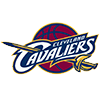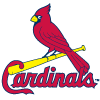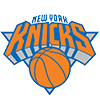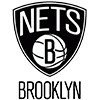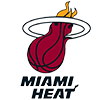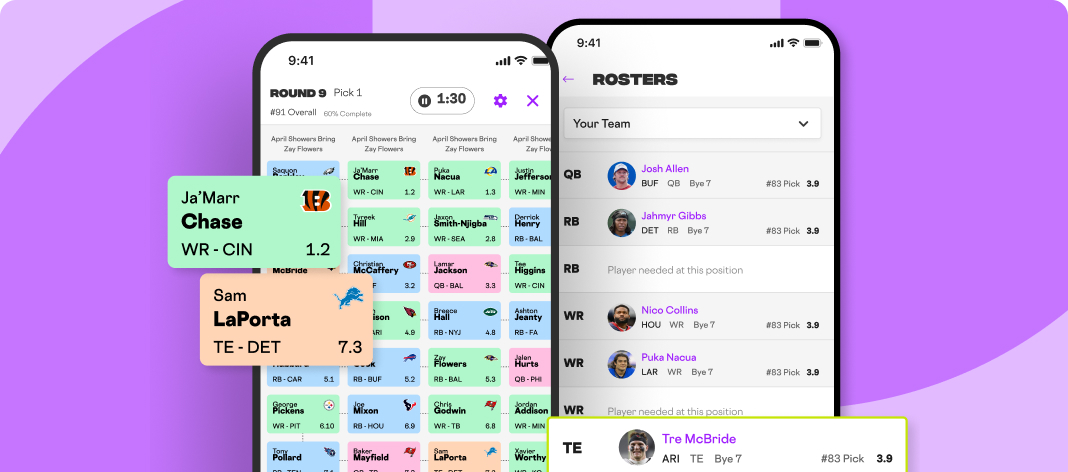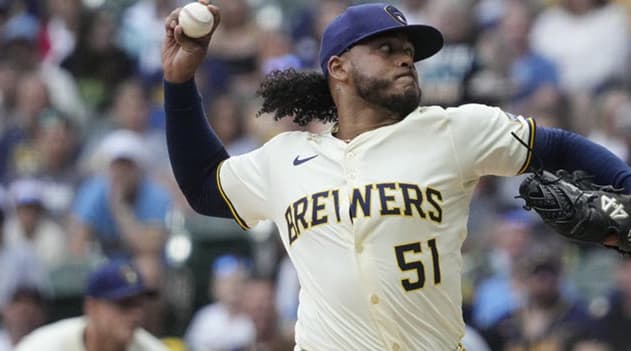Last week we took a short excursion through Baseball Savant to explore Pitcher Exit Velocity and Hard Hit Percentage, and I've spent more time this spring exploring advanced pitcher metrics and data than I've done with hitters. So this week I thought I'd go the opposite route and look at some of the leaders and trailers among the batters, and see what I can discover. I don't really have a hypothesis of what I'm looking for – there's no Kyle Hendricks or Trevor Williams inspiring this dive. But I'm hoping to glean a few nuggets on the journey. Please come join me.
Exit Velocity Leaders & Trailers
Last week I limited the discussion to previous seasons, but with two weeks in the books I thought I'd take a quick perusal over what has happened so far this season, before narrowing my search to players with a higher sample size last year. For this year, I set the qualifying level of 25 batted ball events (BBE). There are 134 qualified hitters entering Tuesday, with a range of 95.9 mph (Cody Bellinger) to 77.5 mph (Ender Inciarte). Here are the exit velocity leaders:
| BATTER | BBE | EXIT VELOCITY |
|---|---|---|
| Cody Bellinger | 40 | 95.9 |
| Christian Yelich | 35 | 95.4 |
| Yoan Moncada | 29 | 95.0 |
| Josh Bell | 27 | 94.8 |
| Mike Trout | 27 | 94.5 |
| Carlos Santana | 28 | 94.1 |
Last week we took a short excursion through Baseball Savant to explore Pitcher Exit Velocity and Hard Hit Percentage, and I've spent more time this spring exploring advanced pitcher metrics and data than I've done with hitters. So this week I thought I'd go the opposite route and look at some of the leaders and trailers among the batters, and see what I can discover. I don't really have a hypothesis of what I'm looking for – there's no Kyle Hendricks or Trevor Williams inspiring this dive. But I'm hoping to glean a few nuggets on the journey. Please come join me.
Exit Velocity Leaders & Trailers
Last week I limited the discussion to previous seasons, but with two weeks in the books I thought I'd take a quick perusal over what has happened so far this season, before narrowing my search to players with a higher sample size last year. For this year, I set the qualifying level of 25 batted ball events (BBE). There are 134 qualified hitters entering Tuesday, with a range of 95.9 mph (Cody Bellinger) to 77.5 mph (Ender Inciarte). Here are the exit velocity leaders:
| BATTER | BBE | EXIT VELOCITY |
|---|---|---|
| Cody Bellinger | 40 | 95.9 |
| Christian Yelich | 35 | 95.4 |
| Yoan Moncada | 29 | 95.0 |
| Josh Bell | 27 | 94.8 |
| Mike Trout | 27 | 94.5 |
| Carlos Santana | 28 | 94.1 |
| Anthony Rendon | 27 | 94.1 |
| J.D. Martinez | 37 | 94.0 |
| Javier Baez | 27 | 94.0 |
| Ronald Acuna Jr. | 27 | 93.8 |
| Joc Pederson | 25 | 93.7 |
| Gary Sanchez | 29 | 93.5 |
| Nick Markakis | 29 | 93.4 |
| Max Kepler | 26 | 93.0 |
| Eric Hosmer | 33 | 92.7 |
It's no surprise to see a lot of fast-starters and familiar names. Cody Bellinger has seven homers – of course he's among the fast starters in exit velocity. Ronald Acuna Jr. hit his first homer Monday (and hit another Tuesday night that doesn't yet register here), so we expect his power numbers to only improve. Gary Sanchez hit three homers Sunday and not surprisingly makes this list.
After starting this article, I found out that I might not yet have enough data to draw reliable conclusions from these fast starters. In a 2016 article on Baseball Prospectus, Russell Carleton suggested that hitter exit velocity starts to stabilize around 40 BBE*. If you limit your 2019 leaders to 40-plus BBE, however, you return only nine batters. So for now I'm keeping my list at 25-plus BBE, and it turns out this is more for entertainment value.
* Another note from Carleton's awesome article is to clarify that merely stabilizing at 40 BBE doesn't mean that it's predictive of a hitter's new level, only that it has accurately reflected what's happened with that batter.
Even still, three hitters jump off the page to me: Yoan Moncada, Josh Bell and Max Kepler. All three not only are among MLB leaders for the category, but have seen an average jump over 4.0 mph. Here are the exit velocity trailers:
| Hitter | BBE | Exit Velocity |
|---|---|---|
| Ender Inciarte | 26 | 77.5 |
| Billy Hamilton | 26 | 80.1 |
| Maikel Franco | 27 | 82.6 |
| Cesar Hernandez | 25 | 82.8 |
| Dee Gordon | 39 | 82.8 |
| Leury Garcia | 26 | 83.1 |
| Joe Panik | 25 | 83.3 |
| Kolten Wong | 27 | 83.3 |
| Adam Jones | 38 | 83.5 |
| Nolan Arenado | 41 | 83.6 |
| Charlie Blackmon | 38 | 83.8 |
I really didn't expect to see a guy with four homers and a slugging percentage over .700 on this list, but here we are with Adam Jones nonetheless. Maikel Franco with the third-lowest exit velocity is also shocking – but at least in his case he was at 27 BBE.
It's probably too early to be alarmed, but owners of Nolan Arenado and Charlie Blackmon can't be happy to see them on this list. I'll make sure to especially watch Arenado closely – his exit velocity last season was 89.7.
2018 Exit Velocity Leaders & Trailers
Let's get some context to these numbers. How do the early returns from 2019 compare to last year? I used 300 BBE as my baseline, which nets us 186 hitters, ranging from Nelson Cruz (93.9 mph) to Billy Hamilton (79.3 mph). This is the same number of BBE that we used for the pitchers. I'm not sure if that is the right number to use, or whether instead it would have been wiser to widen the sample at 250 BBE, or narrow it to 400 BBE, the next available goalposts on Savant. You'll notice that the velocity ranges are much wider for hitters – in fact, at 14.2 mph vs. 6.5 mph for the pitchers, it's more than double the range.
| Rank | Batter | BBE | Exit Velocity |
|---|---|---|---|
1 | Nelson Cruz | 400 | 93.9 |
2 | Giancarlo Stanton | 416 | 93.7 |
3 | Matt Olson | 419 | 93.1 |
4 | Matt Chapman | 403 | 93.0 |
5 | J.D. Martinez | 430 | 93.0 |
6 | Tommy Pham | 357 | 92.8 |
7 | Khris Davis | 408 | 92.5 |
8 | Kendrys Morales | 323 | 92.4 |
9 | Christian Yelich | 441 | 92.3 |
10 | Mookie Betts | 434 | 92.2 |
11 | Jackie Bradley Jr. | 341 | 91.9 |
12 | Ryan Braun | 323 | 91.9 |
13 | Teoscar Hernandez | 316 | 91.8 |
14 | Manny Machado | 533 | 91.6 |
15 | David Peralta | 438 | 91.5 |
16 | Marcell Ozuna | 476 | 91.5 |
17 | Wilson Ramos | 304 | 91.3 |
18 | Jose Abreu | 396 | 91.3 |
19 | Eugenio Suarez | 391 | 91.2 |
20 | Salvador Perez | 407 | 91.2 |
21 | Mike Trout | 351 | 91.2 |
22 | DJ LeMahieu | 460 | 91.1 |
23 | Joc Pederson | 314 | 91.1 |
24 | Mitch Moreland | 307 | 90.8 |
25 | Justin Upton | 363 | 90.8 |
If I told you in advance that only one Rockies hitter made this list, would you have guessed DJ LeMahieu? I know I wouldn't! But maybe I should have been paying closer attention. Since the start of the Statcast Era, LeMahieu has had an exit velocity of 90.0 mph or higher in three of four seasons, with a low of 88.8 mph coming in 2017, still comfortably ahead of the major league average.
Is it possible that certain ballparks' detectors run hot? That was the allegation in Detroit in 2017 when addressing some of the exit velocities of Tigers hitters that season. It shouldn't surprise us when the World Series champion Red Sox place a number of hitters on this list, given how potent their offense was. I expected to see J.D. Martinez and Mookie Betts here, but I'll be honest – prior to my "FOMO" article in March, I didn't know that about Jackie Bradley Jr. nor did I expect to see Mitch Moreland on the list. Bradley's 91.9 mph is 2.1 mph higher than his 2015-18 average, and only other time it reached 90 mph. By contrast, Moreland has topped 90 mph in all but one of his Statcast seasons and is off to a blazing start in 2019, averaging 93.5 mph off the bat.
What about the trailers? Does anyone stand out like our pair of 2019 Rockies?
| Rank | Batter | BBE | Exit Velocity |
|---|---|---|---|
172 | Josh Reddick | 359 | 85.2 |
173 | Adam Engel | 308 | 84.8 |
174 | Kolten Wong | 302 | 84.4 |
175 | Jose Iglesias | 390 | 84.3 |
176 | Cesar Hernandez | 454 | 84.2 |
177 | Miguel Rojas | 426 | 84.1 |
178 | Jon Jay | 440 | 84.1 |
179 | Mallex Smith | 391 | 84.0 |
180 | Jose Peraza | 570 | 83.9 |
181 | Isiah Kiner-Falefa | 300 | 83.8 |
182 | Ender Inciarte | 519 | 83.7 |
183 | Alcides Escobar | 423 | 83.1 |
184 | Wilmer Difo | 333 | 82.1 |
185 | Dee Gordon | 490 | 80.6 |
186 | Billy Hamilton | 376 | 79.3 |
Wow, this list is the "who's who of weak contact" – Hamilton, Gordon, Alcides Escobar and more! Nearly every player on this list is someone you'd expect to be there, with the possible exception of Jose Peraza. Peraza may have hit 14 homers, but that doesn't mean he was crushing the ball. First of all, he did it in 683 late appearances, meaning that they came roughly 49 plate appearances apart. Moreover, he's been among the league trailers in exit velocity year after year after year. After smoking a homer on Opening Day this year, he's had one extra-base hit.
Barrels Per Batted Ball Events
Statcast defines a "barreled" hit as one that's hit at least 98 mph, with a launch angle between 26-30 degrees, with the launch angle expanding with each additional mph. Much like with hard hit percentage for pitchers, this helps us identify who is proficient at not just hitting balls harder than average, but those who are well above average. Barreled hits have a floor of a .500 batting average and 1.500 slugging percentage, and an average of .822/2.386 respectively.
I posed a question on Twitter about which measure is more helpful – number of barrels, barrels per plate appearance (PA) or barrels per BBE. I genuinely don't know which is more enlightening or interesting – though I suspect it's one of the two rate stats. Naturally the poll returned a tie between the two rate stats, and I can see the arguments for both, as well as for a measure of barrels per at-bats (which wouldn't penalize those that take more walks, as a per-PA measure would do). The latter reason is why I decided to use barrels per BBE. Here are last year's leaders:
| Rank | Batter | Barrels | Barrels/BBE |
|---|---|---|---|
1 | Khris Davis | 70 | 17.2 |
2 | Mike Trout | 58 | 16.5 |
3 | J.D. Martinez | 69 | 16.0 |
4 | Teoscar Hernandez | 49 | 15.5 |
5 | Giancarlo Stanton | 63 | 15.1 |
6 | Randal Grichuk | 44 | 14.4 |
7 | Mookie Betts | 61 | 14.1 |
8 | Justin Upton | 51 | 14.0 |
9 | Nelson Cruz | 55 | 13.8 |
10 | Matt Carpenter | 56 | 13.7 |
11 | Paul Goldschmidt | 57 | 13.6 |
12 | Ronald Acuna Jr. | 42 | 13.4 |
13 | Christian Yelich | 57 | 12.9 |
14 | Trevor Story | 55 | 12.7 |
15 | Javier Baez | 56 | 12.6 |
16 | Matt Olson | 51 | 12.2 |
17 | C.J. Cron | 44 | 12.2 |
18 | Kendrys Morales | 39 | 12.1 |
19 | Yasmani Grandal | 38 | 11.9 |
20 | Trey Mancini | 51 | 11.8 |
21 | Edwin Encarnacion | 44 | 11.7 |
22 | Mitch Moreland | 36 | 11.7 |
23 | Bryce Harper | 45 | 11.5 |
24 | Rhys Hoskins | 47 | 11.4 |
25 | Jesus Aguilar | 41 | 11.4 |
Above I asked about the possibility of a "hot radar gun" (I know it's more sophisticated than a single radar gun, but I also don't know everything that goes into measuring exit velocities and barrels) at certain ballparks, but I might have been asking about the wrong ballpark. I certainly didn't expect to see two Blue Jays in the top 6 of this measure, a third in the top 25 and another at No. 30 in Justin Smoak. Teoscar Hernandez had a high barrel rate in 2017 but has fallen considerably this season – he strikes me as an all-or-nothing batter.
Otherwise, this list is littered with many of the top hitters in the game. With the possible exception of Mitch Moreland, who we explored more above, none of these players would make an observer think that they might not belong here. One wouldn't normally place Matt Carpenter here amongst the sluggers, but he was last season, with 36 homers. In the Statcast Era he's averaged 10.6% barrels, so while his 13.7% last year was an outlier, it's still not entirely shocking when compared against the MLB average of 6.1%.
Let's look at the trailers quickly:
| Rank | Batter | Barrels | Barrels/BBE |
|---|---|---|---|
172 | Robbie Grossman | 7 | 2.2 |
173 | Addison Russell | 7 | 2.2 |
174 | Jonathan Lucroy | 8 | 2.2 |
175 | Alcides Escobar | 9 | 2.1 |
176 | Yuli Gurriel | 9 | 1.9 |
177 | Jon Jay | 8 | 1.8 |
178 | Mallex Smith | 6 | 1.5 |
179 | Ender Inciarte | 8 | 1.5 |
180 | Albert Almora Jr. | 5 | 1.4 |
181 | Jose Iglesias | 5 | 1.3 |
182 | Matt Duffy | 5 | 1.2 |
183 | Miguel Rojas | 4 | 0.9 |
184 | Isiah Kiner-Falefa | 2 | 0.7 |
185 | Billy Hamilton | 2 | 0.5 |
186 | Dee Gordon | 1 | 0.2 |
Most of the names on this list are who you would expect – punch-and-judy stolen base artists and catchers. Yuli Gurriel is the one relatively surprising name for me. I know that stolen bases haven't been his thing, but I still didn't think he'd rate that low, if for no other reason than he still hit for high average. But sure enough, when you look at his history, this is who he is – with barrel rates between 1.9 and 3.4 percent each year of his career.
But having never studied barrels before, what really caught my eye was just how extremely impotent the bottom hitters on this list were. It blows my mind that Dee Gordon had just one barrel in 490 batted ball events all season. That has to be difficult to do! Billy Hamilton had just two barrels in 376 plate appearances – even as a Reds fan who suffered through most of those plate appearances, I'm shocked.
I'll try to come back to this topic later this season, but in the meantime, I implore you to dig around the Statcast data and see what you can find on your own.








